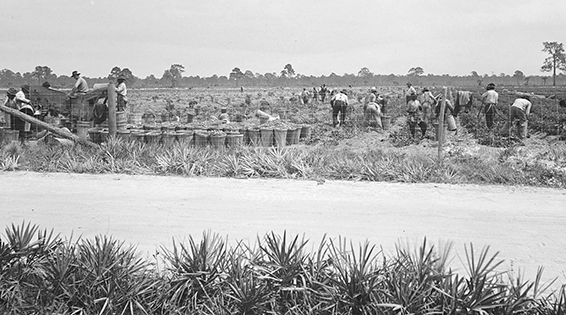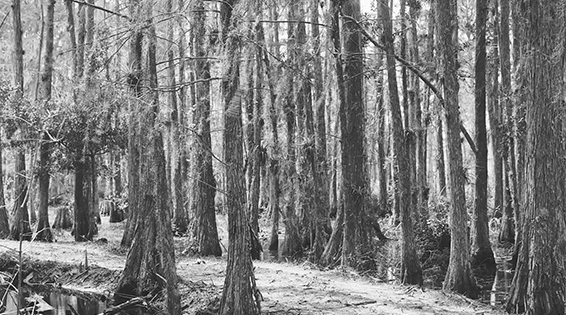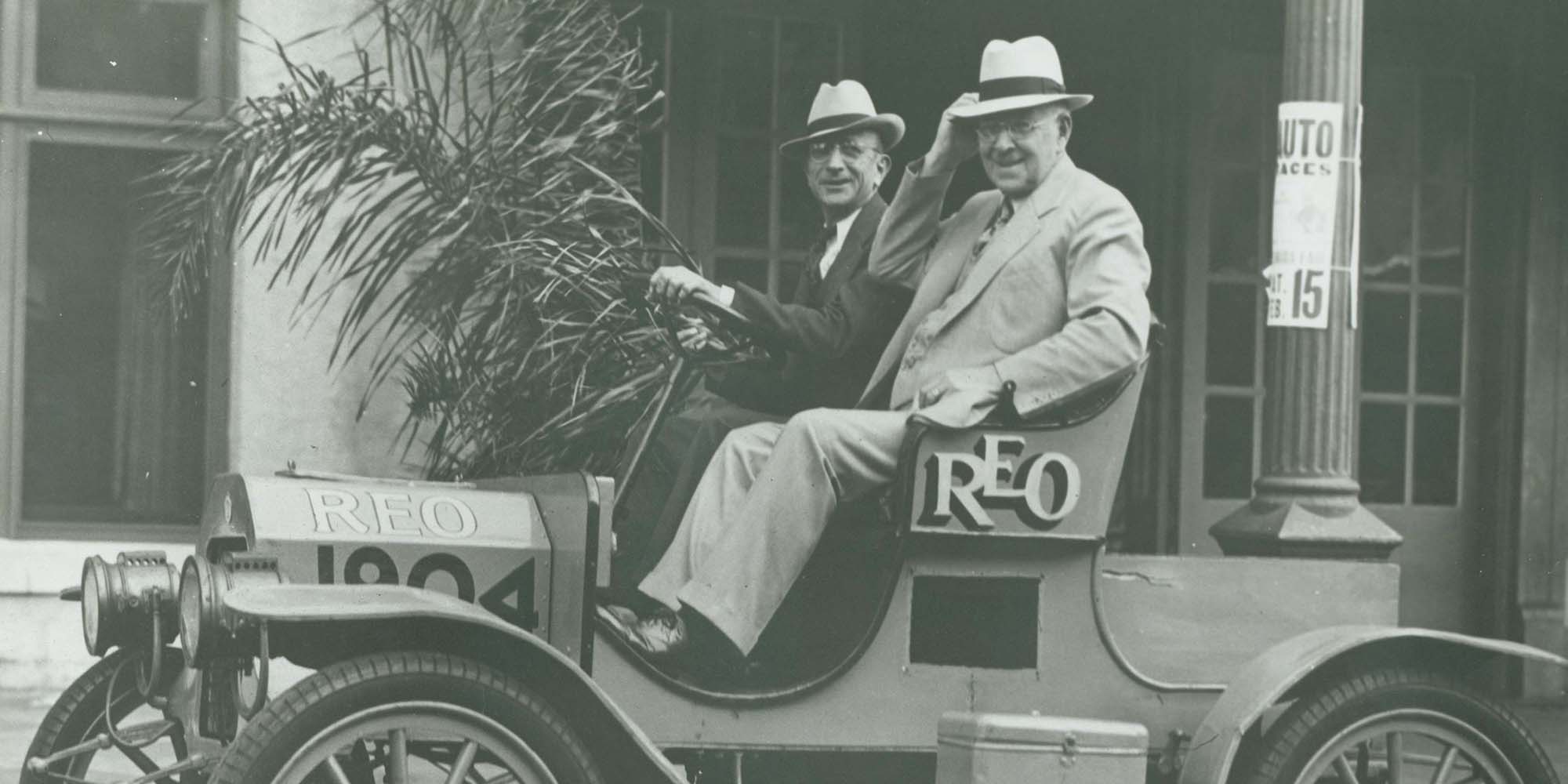The quaint, small town of Oldsmar has been on a colorful ride during its 100-plus years, and it all started with a famous car maker.
It was not uncommon for communities to be created around cars. The growth of automobile ownership allowed people to live farther away from city centers. But the automobile played an outsized role in the successes and setbacks of Oldsmar.
The east Pinellas city’s origin, and its very name, are traced to automobile innovator and manufacturer Ransom Eli Olds. The Ohio native built his first horseless carriage in the mid-1880s, and by the early 1900s he was one of the country’s leading car makers. He sold his first car business, Oldsmobile, and immediately founded his second, the R. E. Olds Car Company, later shortened to Reo.
Yet Olds became bored with the automobile industry and sought other ventures. Although he moved to Lansing, Michigan, he found himself spending more time at his Daytona home, so he looked to the Sunshine State for his next project.
In 1916, Olds purchased 37,541 acres at the north end of Tampa Bay from a Michigan based trust company for about half a million dollars. West of Tampa, the property straddled the Hillsborough-Pinellas County boundary, with about two-thirds of the acquisition in Pinellas and one-third in Hillsborough. Two sets of railroad tracks crossed the property, the Atlantic Coast Line and the Tampa and Gulf Coast, so the area already had a leg up on shipping infrastructure.
Initially, Olds planned to establish farms on the property, and the land became known as Reolds Farms. His development company announced a slight change of plans the following year. While farming was still important, a portion of the land was subdivided into town lots for commercial and residential uses, and a new name appeared on maps — Oldsmar.

Work had already begun on Oldsmar by the time the announcement was made. The Wayside Inn opened in 1917, with Olds and his wife as the first guests. The hotel was soon joined by a post office, general store and bank building. State Street was the main business street, and the entire town was platted like spokes of a wheel, with the central hub located on the shores of Tampa Bay. While the plan resembled that of Washington, D.C., the symbolism of the wheel and its connection to the automobile are undeniable, as car wheels were made with wooden spokes that resembled wagon wheels at the time.
Though founded during World War I, the town experienced some early success. It also faced early challenges, none worse than the Hurricane of 1921. The storm made landfall just to the north in Tarpon Springs, and the storm surge pushed the water from Old Tampa Bay to waist-deep levels in Oldsmar. Many buildings were damaged or destroyed, a. but thankfully there was no loss of life.
Recovery came quickly, and by 1923 about 200 people lived in the new community (though Olds was not one of them), and businesses such as the Wayside Inn enjoyed a steady stream of winter tourists.
The automobile industry’s incredible growth and the ensuing construction of new roads also created opportunities and threats for Oldsmar’s future. In 1921, Memorial Highway was constructed to better connect Tampa to Pinellas County. It was built in honor of those who lost their lives serving in World War I. Oldsmar was the terminus for the road, and that connection proved to be a strong benefit for the new city.

Memorial Highway’s full benefit was short lived, though, as George S. Gandy opened his bridge from the Interbay Peninsula in Tampa to the Weedon Island area of St. Petersburg in 1924. Though it was a private toll bridge, the new route cut an incredible amount of time off of the drive between Tampa and St. Petersburg. Those heading to northern Pinellas still used Memorial Highway, but the Gandy Bridge provided a shortcut that cut off Oldsmar for many travelers.
Around this time, Olds lost interest in his namesake town. He reportedly spent nearly $4.5 million on his investments in Oldsmar, only to see about a quarter of that return in profit. He sold to a group of investors led by Harry Prettyman, who soon after partnered with another investment group headed by Henry Duncan. Allegedly, Duncan tried to bilk Prettyman and his company out of their investments. Duncan’s biggest contribution to Oldsmar was to change the name of the city to Tampashores.
Tampashores’ entrance into the heady days of the Florida land boom was like that of many other boom-era communities. Splashy advertisements and big promises filled the newspapers, and ads promised investors big projects and bigger profits. Though sometimes those ideas came to fruition, this was not the case with Tampashores. The project that started with a bang ended with a thud – and several lawsuits.
While greed and grift were the major contributors to the failure of Tampashores, other factors were involved as well. One of the biggest was another road project. Ben T. Davis constructed a causeway and bridge to connect Tampa to Clearwater in 1933. The toll road, later renamed the Courtney Campbell Causeway, finished what the Gandy Bridge started. Oldsmar became even more isolated at a time when the Great Depression was taking a massive economic toll on the state and country.
In 1937, city leaders felt that Tampashores needed a fresh start. They returned to their history and resurrected the name Oldsmar.
The state, and the Bay area, saw a significant economic lift during and after World War II. Oldsmar could have taken part as well if not for yet another bridge — the Howard Frankland — creating another way to avoid the city. Finally, the exponential population growth in Pinellas County found Oldsmar. The city’s population climbed from 345 people in 1950 to 2,608 people just 30 years later. The city reached 10,000 residents in the early 1990s and today has a population of over 15,000 on its 10 square miles. Unfortunately, there are only a few buildings that date back to Oldsmar’s early years, though one – the original bank building – now is home to the Oldsmar Historical Society.
Now, over 100 years later, the plans laid out by Olds and his company are finally coming into view. A small business district called Oldsmar Town Center opened in the early 2000s, bringing business back to State Street. The real boost came in 2005, when Nielsen research company opened an $80-million business campus that brought 1,600 jobs to the city.
Those projects, along with Oldsmar’s location on Tampa Bay and roughly equidistant between Tampa, St. Petersburg and Clearwater — plus its proximity to Tampa International Airport and St. Pete-Clearwater International Airport — make Oldsmar a desirable place to live. Just be sure to take the right road there.
Events in Oldsmar
Oldsmar has been host to a variety of festivals and celebrations through the years. In its early days, the city sponsored a mid-winter festival that featured games and barbecue, as well as annual Fourth of July and Christmas celebrations. In more modern times, Oldsmar held an annual Founder’s Day to celebrate its history, as well as an Oktoberfest. Most of these festivals took place in the city’s two parks, R. E. Olds Park and Veterans Memorial Park. The annual Oldsmar Day started in 1963 to honor the city and Memorial Day. Fittingly, part of the recent programming has included car shows.
Not done learning? Check out 100 Years of Tampa History



